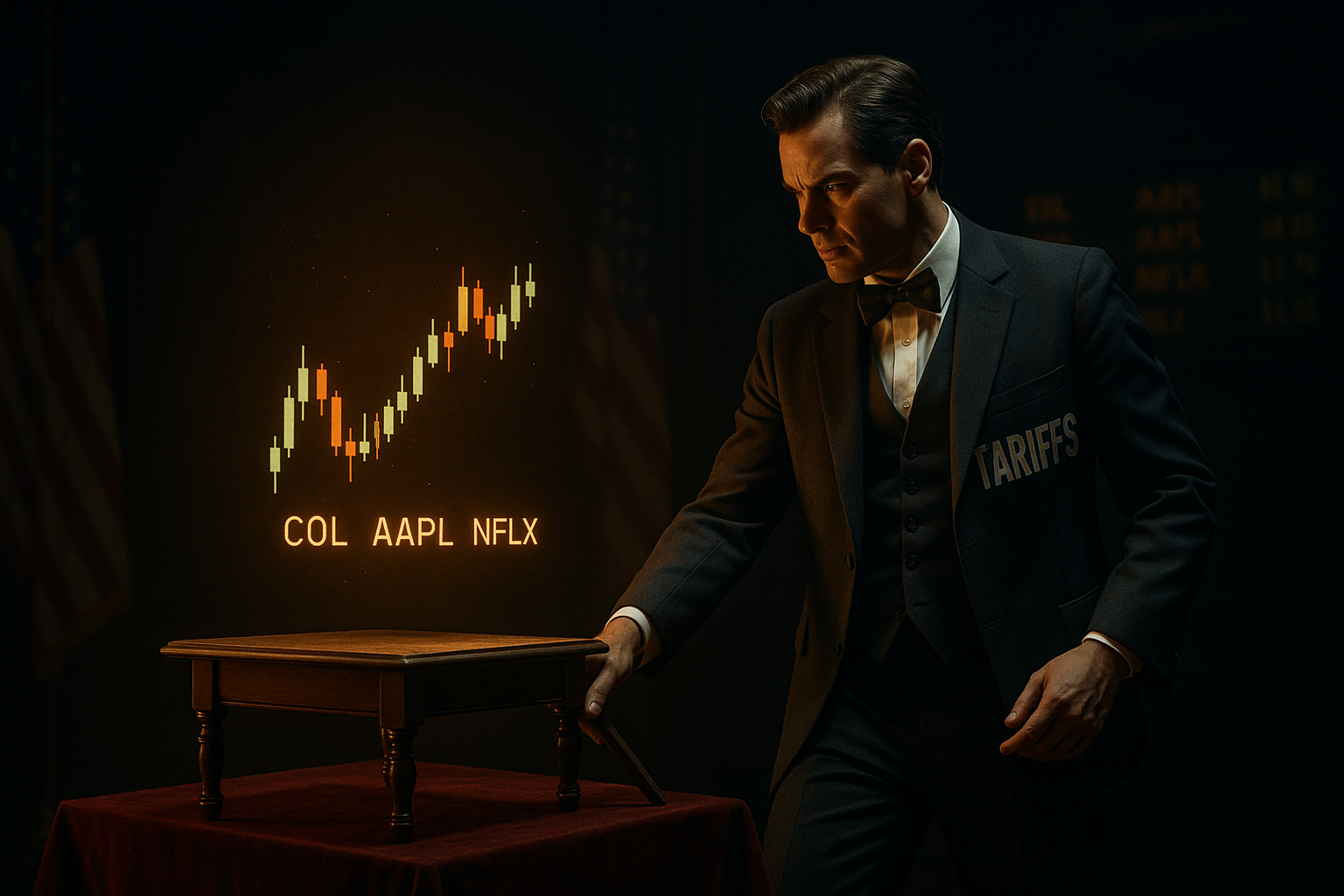Is it just me, or does anyone else feel like they're watching a magic show where the market keeps levitating despite someone slowly removing the table underneath? We're witnessing something peculiar in the current market environment that deserves a closer look.
On Liberation Day (what a name, by the way), average tariff rates hovered around 25%. They've since eased to approximately 22%, and yet the market has somehow recouped all its losses. This doesn't add up in the traditional sense, and it's worth asking why.
Look, markets are supposed to be forward-looking mechanisms that efficiently price in future economic conditions. The standard playbook says tariffs are generally economic drags - they increase input costs, disrupt supply chains, and ultimately squeeze margins or get passed to consumers. So why is the market shrugging off what still amounts to a significant tariff regime?
I've been thinking about this through what I call the "political fiscal reality" framework. Trump faces twin challenges that aren't getting enough attention: a budget problem and a debt problem. These aren't small issues - they're structural constraints that will shape policy regardless of rhetoric or intention.
The simple fact is that tax revenue has to come from somewhere. Tariffs represent a revenue stream the administration desperately needs. When you're facing trillion-dollar deficits, you don't casually discard sources of federal income, especially ones you've publicly championed. The 3 percentage point reduction we've seen might be more about targeted relief than signaling a broader retreat from the tariff strategy.
What's fascinating here is the market's apparent willingness to ignore this fiscal reality. There are a few possible explanations:
First, there's the "selective hearing" theory. Markets are choosing to focus on the tariff reductions while ignoring the likelihood that the remaining 22% will stick around indefinitely because of budget necessities.
Second, there's what I'll call the "offsetting stimulus" calculation. Perhaps the market believes that even with tariffs as a drag, other policies (deregulation, potential tax cuts, etc.) will more than compensate, leading to net positive conditions for corporate profits.
Third - and this is where things get interesting - we might be seeing an artificial support mechanism at work. The question worth asking is: who benefits from projecting market stability during policy uncertainty? And what levers do they have at their disposal?
I'm not suggesting conspiracy theories here, but rather pointing out that markets don't operate in a political vacuum. There are powerful incentives across various stakeholders to maintain the appearance of economic confidence during major policy transitions.
The historical pattern is worth noting. Markets often experience a "honeymoon period" following elections before economic reality sets in. Remember how markets initially rallied after the 2016 election before encountering volatility as policy details emerged?
What makes this time different is the degree to which fiscal constraints will limit policy options. The federal debt has expanded dramatically since Trump's first term. The room for maneuver is correspondingly smaller.
So where does this leave investors? In a market that might be temporarily suspended between economic gravity and political aspiration. The divergence between tariff realities and market performance suggests we're in for some reconciliation - either tariffs will need to come down further to justify current valuations, or valuations will need to adjust to the reality of persistent tariffs.
In the meantime, keep an eye on the treasury yield curve and federal tax receipt data. They'll likely signal economic reality before market prices do. This strange market might stay strange a while longer, but fiscal gravity, like its physical counterpart, has a way of reasserting itself eventually.



